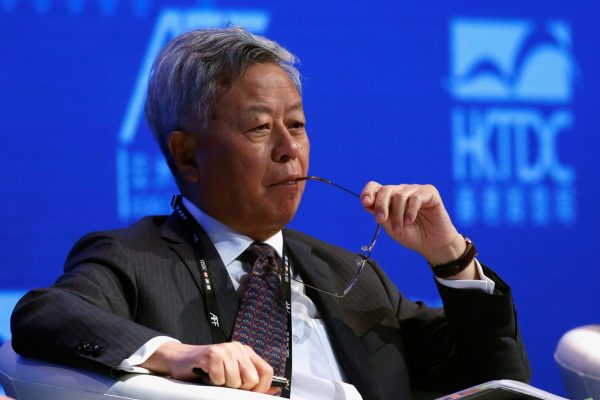The debate about the AIIB is in part a result of oversimplifying the challenges of setting up a new multilateral development bank from scratch. The World Bank has been in operation for over 70 years and had around 12,000 total full-time staff members in 2017. By comparison, at the AIIB’s first annual Board of Governors meeting in June 2016, the organisation had 39 staff members and anticipated a total staff of 100 by the end of that year.
It will take some time before the AIIB can match the lending scale of those with a longer history, and rightly so — solid multilateral institutional foundations and practices do not simply fall from the sky. Indeed, the AIIB regards 2016–20 as its ‘start-up phase’ and 2021–27 as its ‘growth phase’. This gradual approach is also consistent with China’s overall style of pragmatic economic reform and opening up.
As the AIIB ramps up, certain features that allow for institutional experimentation seem to be moving into place. In a recent interview, AIIB President Jin Liqun mentioned that ‘[the AIIB] must have creative spirit, and neither clone the World Bank nor copy the ADB. Instead, we should review and absorb good experiences and strive to build a multilateral financial institution with advanced 21st century governance concepts’.
Some of this ‘creative spirit’ is already apparent. To reduce administrative costs and loan approval times, the AIIB Board of Directors is unpaid and non-resident. Also, bidding for AIIB projects is not confined to member countries. On environmental and social safeguards, some have expressed concerns over the AIIB’s reliance on corporate and country reporting systems, but others believe this could promote greater borrowing capacity in recipient countries.
A more contentious issue is that of the AIIB’s loan capacity and loan conditions: can the Bank strike a balance between high-standards and safeguards on project loans while improving the speed and size of loan dispersion without resorting to strict policy conditionalities? It is still too early to assess these aspects, although China is clearly far less willing to impose wide-ranging policy conditionalities than are other multilateral development banks.
Existing studies have generally focussed on estimating the AIIB’s scale of lending by super-imposing the operational features of existing multilateral development banks. But from an institutional perspective, China’s experimental approach to its own national development banks (such as the China Development Bank) suggests an inclination for experimentation with the AIIB.
The AIIB has secured a triple-A rating from the three major international credit ratings agencies contingent on the organisation respecting its (maximum) statutory loan-to-equity ratio of 2.5, which allows it to tap international capital markets at low cost. This conservative statutory ratio is consistent with those of existing multilateral development banks.
The AIIB’s articles of agreement also include little-noticed provisions for a ‘special funds’ mechanism, whereby funds are managed by the AIIB, can be channelled into AIIB infrastructure projects and are held separately from the organisation’s shareholder equity.
The idea is that outside public and private investors can contribute resources to these special funds, and it just so happens that China has also created several stand-alone investment vehicles, such as the Silk Road Fund, the China–Africa Development Fund and the China–Russia Regional Development Investment Fund, which collectively have a target fund size of almost US$100 billion. Most of these vehicles have received their capital from China’s national development banks, which in turn leverage the equity capital received from the country’s foreign exchange reserves to raise cheap financing from domestic capital markets.
It is not inconceivable that at some point some of these various vehicles could selectively finance AIIB infrastructure projects through the special funds mechanism, especially as the organisation garners further expertise managing projects in different regional settings. The AIIB’s institutional design appears to maintain a de jure loan-to-equity ratio aimed at safeguarding access to international capital markets while also creating a conduit that allows for de facto infrastructure financing to be scaled up above the statutory limit.
Keeping the AIIB’s institutional context in mind, some Chinese scholars have suggested that China’s overseas development finance will come less in the form of official development assistance and more in the form of ‘other official flows’ (OOF), OOF-like loans and OOF-like investments from national development banks and other state-backed entities, due to the nature of large infrastructure projects. In this vein, Zhou Xiaochuan, former governor of the People’s Bank of China, positioned the role of development finance as between that of concessional and commercial finance, but ‘slightly tilted’ towards the latter.
This apparent inclination to experiment with innovative financial arrangements could allow the AIIB to improve upon existing multilateral development bank practices, at least in terms of extending large and rapid infrastructure project loan dispersions. But the AIIB’s articles of agreement appear to leave room for wider experimentation with scaling-up via the special funds mechanism, and it is this broader backing of China’s financial institutions that may, over time, give the AIIB its truly distinctive operational features.
Daniel Poon is an economist with the United Nations Conference on Trade and Development (UNCTAD), Division on Globalization and Development Strategies. He previously worked for the International Labour Organization and the North-South Institute (Canada).
A version of this article originally appeared here in The World Financial Review. This commentary is based on a background paper co-authored with Ricardo Gottschalk, prepared for the first session of UNCTAD’s Intergovernmental Group of Experts on Financing for Development, 8–10 November 2017.

